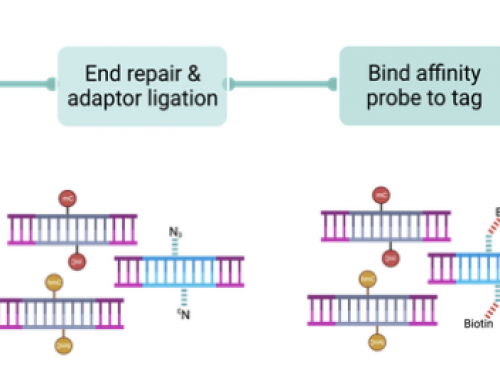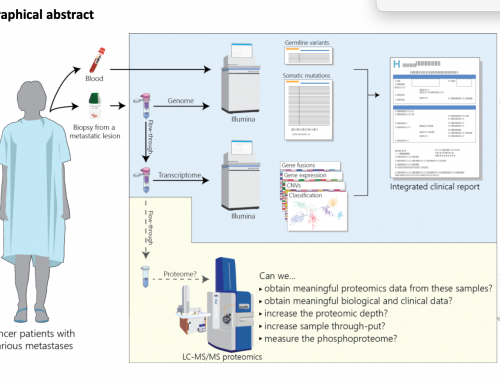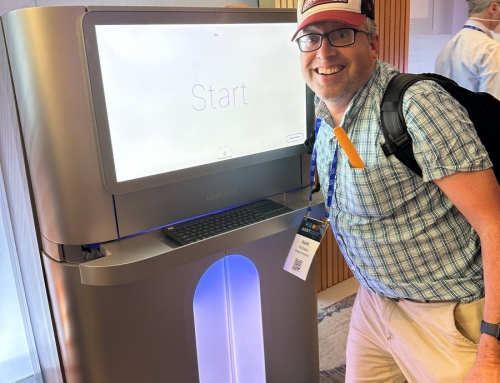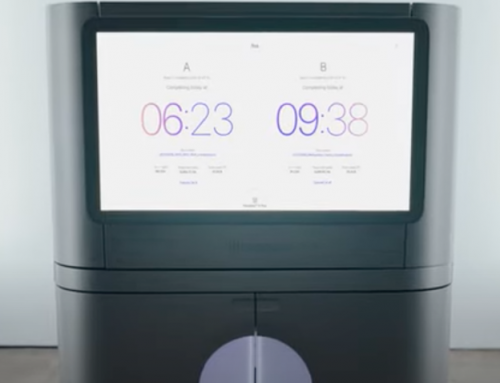10Xgenomics buys Spatial Transcriptomics: Single-cell methods are having at least as big an impact on our understanding of biology as microarrays did when they first appeared in the mid-to-late 1990s. And now that 10X Genomics have bought Spatial Transcriptomics many single-cell users are likely to consider the next frontier – Spatialomics (read this post). The purchase, along with Augusts purchase of Epinomics, which brought the IP behind ATAC-Seq into the 10X stable (and Fergus Chan and @WJGreenleaf to the SAB), means 10X have a very strong position in single-cell biology. Matched to their pretty healthy sales over the last couple of years and the future for 10X, and for 10X users, looks bright.
I first wrote about the Spatial Transcriptomics technology after hearing it presented at AGBT ’14 by Patrick Stahl. The method was immediately understandable and its likely impact easy to see. However, it took a long time for Spatial Transcriptomics to realise the potential of the assay and several technical hurdles slowed the progress of a commercially viable product. The technology was invented at the Science for Life Laboratory, was first published in Science in 2016, and was a “method to watch” in Nature Methods this year. In June 2018 the Lundeberg group posted a report on BioRxiv showing how the technology could be used to interrogate Breast cancer heterogeneity. Tissue is sectioned onto a microarray spotted (not actually spotted, but you know what I mean) with barcoded-oligo-dT, reverse transcription generates a 2-dimensionally barcoded RNA-Seq library. After sequencing reads can be mapped back to slide co-ordinates allowing spatial gene expression to be decoded. Users can image the cDNA “footprint” in a microarray scanner or on a fluorescent microscope, however resolution is not incredibly high with just 1007 “spots”. I’ve always hoped they could move to Agilent’s 1 million spot slides.
The promise of Spatialomics:
The standard methods for RNA-Seq allow users to generate high-depth transcriptomes from bulk tissues or highly-dimensional data from single-cells. But these methods are not suited to providing details about the where in a tissue gene expression is active. This is where methods the retain spatial information can reveal novel biology. These spatialomics methods include Spatial Transcriptomics, laser-capture microdissection, Nanostring’s Digital Spatial Profiling, in situ sequencing (see below and the Nature Protocols paper by George Church’s group), and imaging-based approaches like MERFISH (see this post). All of these methods are inherently limited because tissue architecture varies on a micro and macro scale. Spatialomics users will need to process large sections with lower resolution sequencing methods analysis to minimise the sequencing, or imaging, required otherwise they’ll bankrupt themselves. Some regions of tissue may require users to work with smaller sections on high-resolution spatialomics methods, but they’ll still need to consider the depth of gene expression analysis for the same reasons.
Congrats @10xgenomics for acquiring @STomics! Looking forward to discuss this addition to the 10x Genomics portfolio during #RNGS3! #singlecell #spatial #sequencing #RNA #transcriptome #conference https://t.co/wM4Nvj1qz8
— VIB Tech Watch (@VIBTechWatch) December 10, 2018
ReadCoor (who just got a grant from the Chan Zukerberg foundation)is commercialising FISSEQ, the fluorescence in-situ sequencing method developed in the Church lab. This will deliver spatial analysis at single-cell resolution, even down to sub-cellular localisation of transcripts.
Bio-Rad lawsuit: Somewhat surprisingly a successful lawsuit by Bio-Rad, where the jury unanimously found that all single-cell and linked-read genomics products sold by 10x “wilfully infringed Bio-Rad patents”, resulted in $23.9 million in damages. A more recent Bio-Rad lawsuit, for infringement of the patens behind the Cellular Research and BDRhapsody system, remains to be settled.
Read coverage of the deal by FierceBiotech, Matthew Herper at Forbes, GenomeWeb and Bio-itWorld.








Leave A Comment